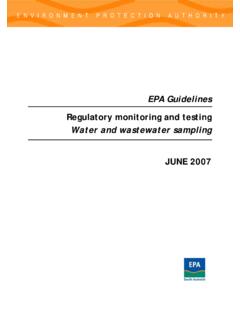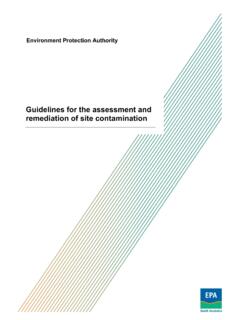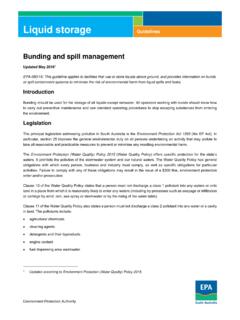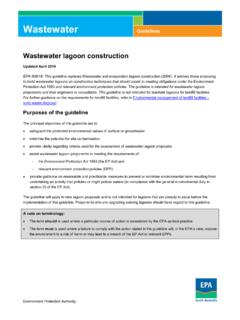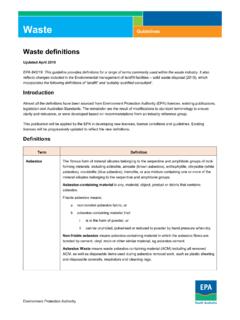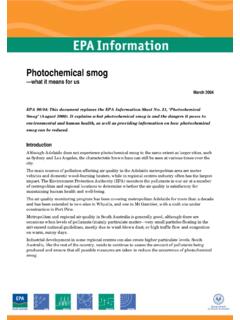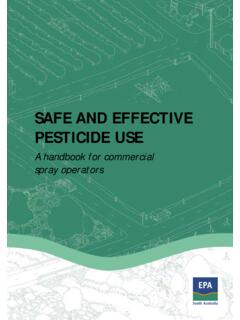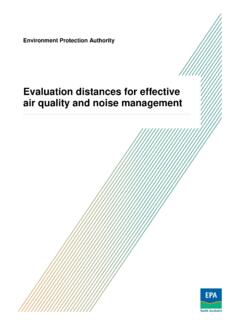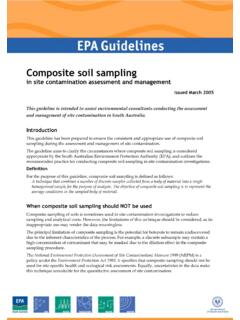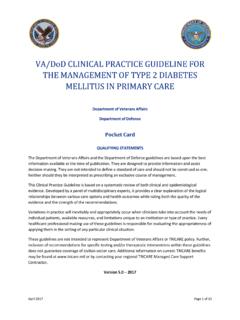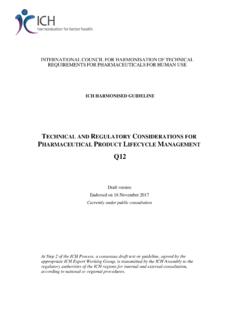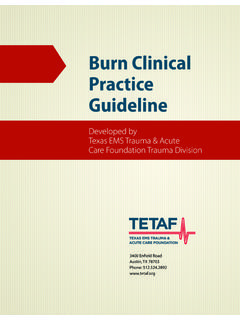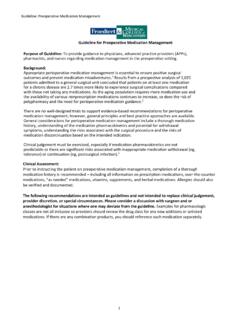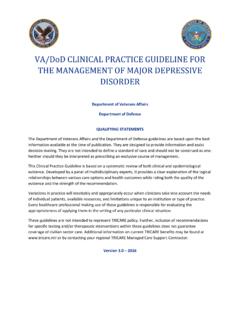Transcription of Guideline for stockpile management - EPA
1 South Australia Guideline for stockpile management Guideline for stockpile management For further information please contact: Information Officer Environment Protection Authority GPO Box 2607 Adelaide SA 5001 Telephone: (08) 8204 2004 Facsimile: (08) 8124 4670 Free call (country): 1800 623 445 Website: Email: ISBN 978-1-921125-91-8 Issued September 2010 Updated October 2020 Disclaimer This publication is a guide only and does not necessarily provide adequate information in relation to every situation. This publication seeks to explain your possible obligations in a helpful and accessible way. In doing so, however, some detail may not be captured. It is important, therefore, that you seek information from the EPA itself regarding your possible obligations and, where appropriate, that you seek your own legal advice.
2 Environment Protection Authority This document may be reproduced in whole or part for the purpose of study or training, subject to the inclusion of an acknowledgment of the source and to it not being used for commercial purposes or sale. Reproduction for purposes other than those given above requires the prior written permission of the Environment Protection Authority. Contents 1 2 Application of the Guiding principles ..6 EPA 3 Potential risks and impacts ..8 Factors that affect risk ..8 Unauthorised stockpiling and abandonment 4 Requirements for managing Managing stockpiles , sites and Leachate, dust, odour and litter ..10 Site and surroundings.
3 11 Dimensions and stockpile limits ..12 Stability ..12 Material Markets and timeframes ..13 Other Financial assurance ..14 Community Appendix 1 Risks associated with stockpiling of Appendix 2 stockpile management Appendix 3 Appendix 4 Further guidelines and List of figures Figure 1 considerations for the assessment and management of List of tables Table 1 Material risk categories depending on the level of material flow and abandonment Summary This Guideline outlines the potential risks associated with the stockpiling of materials (waste or other matter) and provides guidance on appropriate stockpile management and relevant controls to reduce those risks. The Environment Protection Authority (EPA) expects persons undertaking stockpiling to have regard to this Guideline as it is used to determine whether any facility or operator are meeting provisions in the Environment Protection Act 1993.
4 This includes their general environmental duty to take all reasonable and practicable measures to prevent or minimise environmental harm, and promote the circulation of materials through the waste management process; and preventing unauthorised stockpiling of waste or other matter. 1 1 Guideline for stockpile management : Waste and waste derived products for recycling Introduction Stockpiling can result in harm to human health and environmental harm, for example through stockpile fires and exposure of the community to smoke and dust, as well as creating a financial liability that can be passed onto the community and governments if a site is abandoned. Section 25 of the Environment Protection Act 1993 (EP Act) is a general environmental duty (GED) for everyone to take all reasonable and practicable measures to prevent or minimise environmental harm.
5 In accordance with the Objects of the EP Act (section 10), the Environment Protection Authority (EPA) requires that stockpiling is conducted in an appropriate manner so that the risk of harm to human health and the environment is prevented or minimised, and so that materials are circulated through the waste management process to support a strong market for recovered resources. This Guideline sets out the EPA s minimum expectations for the management of potential risks, and it addresses issues related to on-site layout, stability and dimensions of stockpiles , material flow and timeframes for storing waste or other matter. Storage or stockpiling should be temporary and undertaken only in suitable circumstances for genuine and beneficial purposes. 3 Guideline for stockpile management : Waste and waste derived products for recycling 2 Application of the Guideline Scope This Guideline is for anyone stockpiling materials (waste or other matter) and provides guidance to take all reasonable and practicable measures to prevent or minimise environmental harm, and to promote the circulation of materials through the waste management process.
6 This includes facilities that conduct prescribed activities of environmental significance and require an EPA environmental authorisation, under Schedule 1 of the EP Act. In this Guideline , materials can be waste or other matter and includes but is not limited to: materials destined for disposal waste awaiting processing, recycling or reuse waste soil building rubble and material excavated from roads virgin material excavated at a site for on-site use organics secondary or residual materials from industrial activities or waste processing (secondary or residual wastes) e- waste other potentially contaminated waste or other matter1 . This Guideline is not intended to be exhaustive in addressing every material. The materials listed tend to be the main types of materials that are currently stockpiled and give rise to environmental, material flow or abandonment risks.
7 Materials not specifically identified in this Guideline may have extra requirements for their storage, in addition to the requirements in this Guideline . Refer to Appendix 4 for further sources of information with specific requirements for radioactive wastes, treated timber and quarantine wastes. Guiding documentation regarding the suitability of a range of wastes or other materials are listed in Appendix 4, including requirements for being recognised as a product produced to a consistent specification that is fit for purpose, has an immediate market, will not cause harm and is for genuine and beneficial purpose. The Guideline does not specifically address issues regarding liquid waste storage. The Environment Protection (Water Quality) Policy 2015 offers specific protection for the state s waters and prohibits the pollution of the stormwater system and our natural waters.
8 Further information on storing liquids to prevent pollution of waterways can be found Bunding and spill management and Liquid waste classification test. Legislation This Guideline will assist in determining whether operators of facilities are meeting their general environmental duty (GED) by taking all reasonable and practical measures to prevent or minimise environmental harm (s ection 25 of the EP Act), and are meeting their obligations under the Objects of the Act (s ection 10) including: to promote the circulation of materials through the waste management process and to support a strong market for recovered resources by 1 A contaminant includes physical and chemical substances and these may have the potential to cause site contamination (refer to Appendix 3). 4 Leglslatlve I I I I I , , _.
9 -------,,".,,..,,. Framework ' ' ' ' ' \ Guideline for stockpile management : Waste and waste derived products for recycling (A) programs to encourage and assist industry, public authorities and the community to engage in resource recovery; and (B) regulating resource recovery; and (C) regulating the handling, storage, treatment, transfer, transportation, receipt or disposal of waste or other matter; and (D) preventing the unauthorised stockpiling of waste or other matter; For the purposes of section 3(5) of the EP Act (Section 3(5)), unauthorised stockpiling of waste or other matter will be taken to have occurred if a maximum allowable stockpile limit ( stockpile limit) imposed by or under the Act, through a condition of authorisation, has been exceeded. Under Schedule 1, prescribed activities of environmental significance2 require both an environmental authorisation, in the form of a licence from the EPA, and development authorisation under the Planning, Development and Infrastructure Act 2016.
10 For example, the conduct of waste receipt, waste recovery, waste reprocessing and waste disposal are prescribed activities of environmental significance. Schedule 1 also sets out some exceptions to the requirements for a licence. The Environment Protection (Waste to Resources) Policy 2010 indicates that stockpiling of waste or other matter may be considered disposal and contains requirements on how waste must be disposed of, with specific penalties for unlawful disposal of waste including illegal dumping. The Environment Protection (Water Quality) Policy 2015 offers specific protection for the state s waters and prohibits the run off and leachate from stockpiles from polluting the stormwater system and our natural waters. stockpile management considerations and legislative mechanisms detailed in this Guideline are shown schematically in Figure 1.
